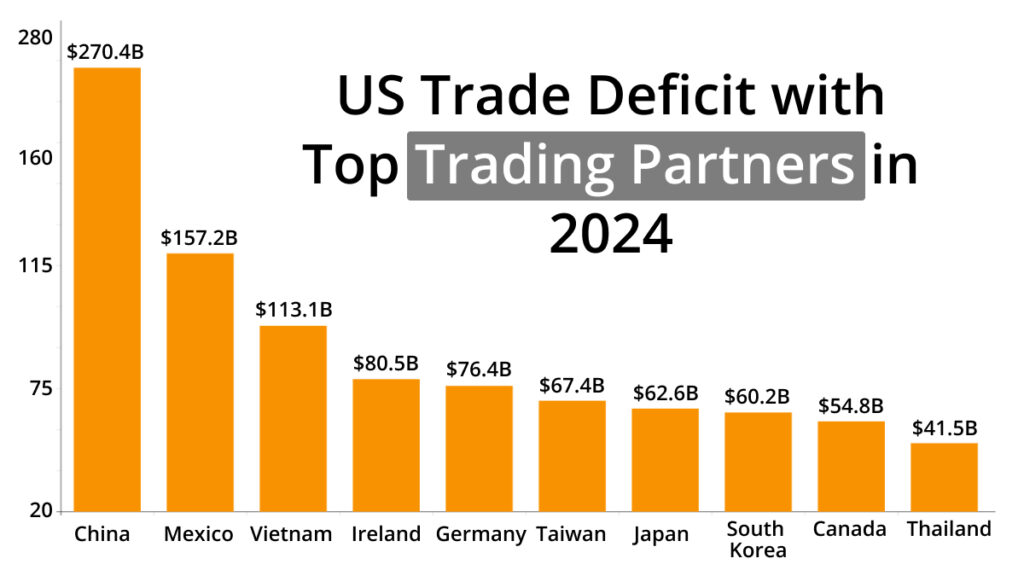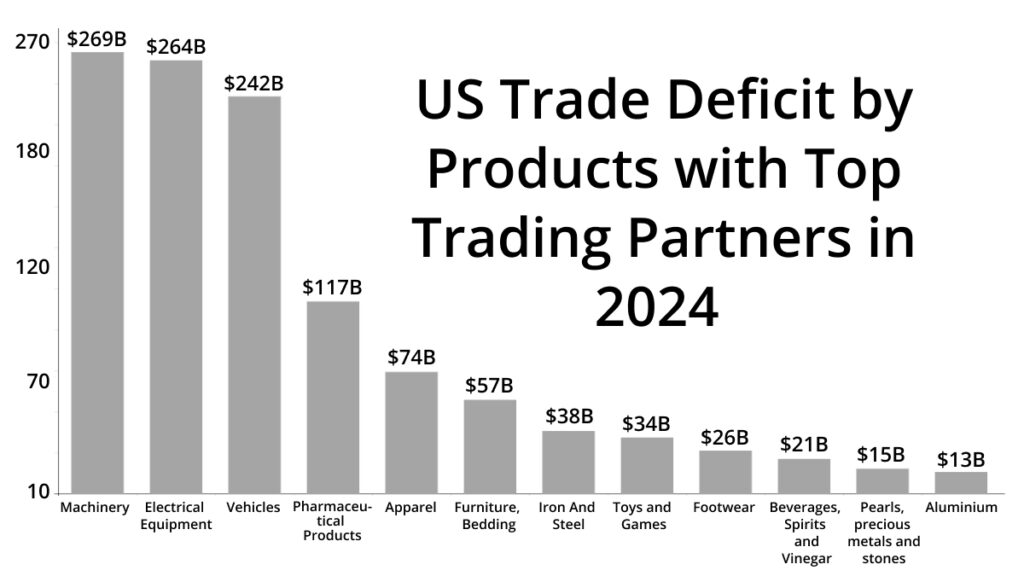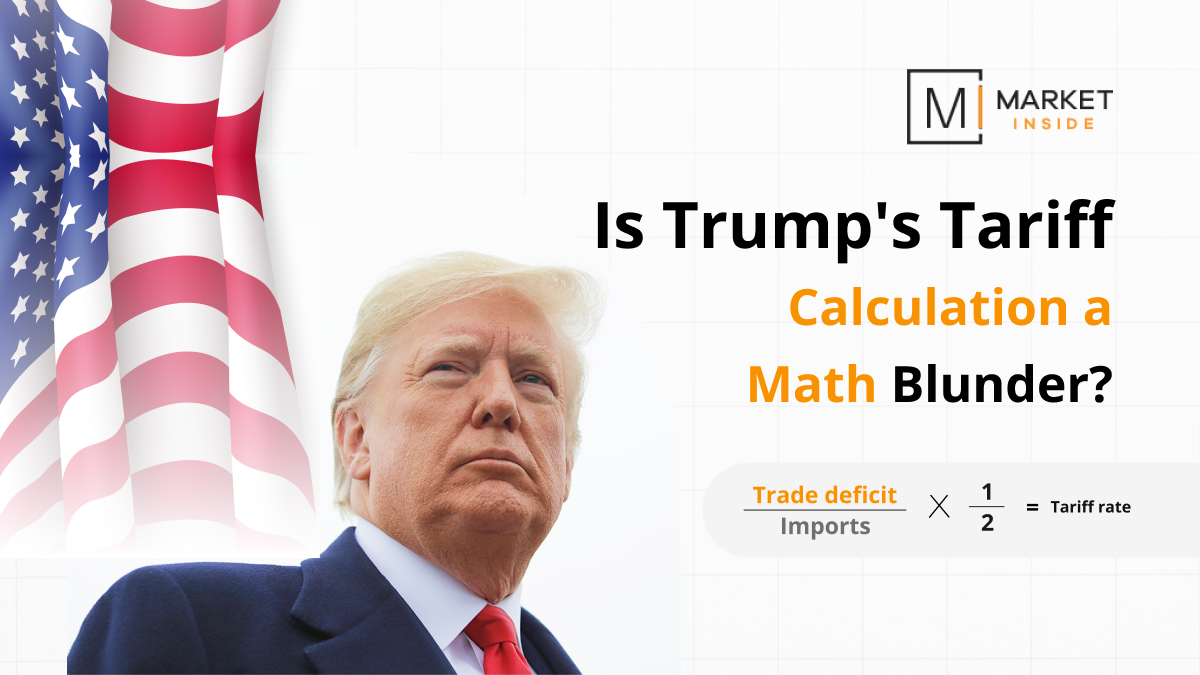Over the years, tariffs, used to protect domestic industries and regulate unfair trade practices, have taken on a new dimension in this modern trade arena. Tariffs are often calculated based on factors like production costs, market competition, and the need to level the playing field. Countries use this approach to balance national interests with the broader dynamics of international commerce.
However, under the Trump administration, the tariff approach has changed. It circled the bilateral trade deficit, considering the volume of trade imbalances rather than traditional economic metrics. This leads to increased costs for businesses and consumers, with potential long-term consequences for economic growth and stability.
What is the rationale behind Trump’s tariffs?
President Donald Trump has consistently linked the rising trade deficit to unfair trade practices implemented by other nations, asserting that higher trade deficits highlight the plight of domestic manufacturers and economic conditions.
This forced the Trump administration to impose sweeping tariffs on all foreign goods in the U.S. market. For instance, on April 2, 2025, Trump signed an executive order to impose a 10% base tariff on all goods, with rates up to 50% imposed on a country-by-country basis (Effective from 9th April). Asian and European countries are among the most affected by these tariffs. Here’s a quick view of the U.S. trade deficit –
- According to Market Inside Analysis, China, Mexico, and Vietnam are the top trading partners with whom the US will face a trade deficit of $270.4, $157.2, and $113.1 billion, respectively, in 2024.
- Going with Trump’s new tariffs policy, China and Vietnam face 145% and 46%, respectively, in 2024.
- Notably, Trump’s tariffs on China increased to 245%, whereas most countries have been exempted with Trump’s 90-day pause on tariffs.

| Country | US Trade Deficit |
| China | $270.4B |
| Mexico | $157.2B |
| Vietnam | $113.1B |
| Ireland | $80.5B |
| Germany | $76.4B |
| Taiwan | $67.4B |
| Japan | $62.6B |
| South Korea | $60.2B |
| Canada | $54.8B |
| Thailand | $41.5B |
US Trade Deficit by Products
If categorised, the U.S. total trade deficit based on the products it imports presents a larger picture of the significant import-export gaps. For instance, machinery, electrical equipment, vehicles, pharmaceutical products, apparel, and others are the most imported commodities, pushing the U.S. trade deficit to the next level. This breakdown not only highlights U.S. economic vulnerability but also emphasises the potential for domestic manufacturing, innovation, and supply chain restructuring to reduce long-term dependency and improve the trade balance. Let’s take a journey –
- Machinery, Electrical equipment, and vehicles are the topmost imported commodities with $269, $ 264, and $242 billion, respectively, in 2024.
- The top three commodities imported by the US contribute half of its trade deficits. The cumulative value (Trade deficit) stood at $775 billion in 2024.
- The introduction of a new tariff policy may create a ripple effect on the US and the global economy. For instance, Tariffs increase the cost of imports, which causes the US to pay more for the same commodities, which means the trade deficit may rise further.
- On the day of the tariffs’ imposition, the global stock market crashed. To see the drastic effect, the Trump Administration put a 90-day pause on tariffs, except for China.
- In the other scenario, the US supplier is forced to adopt new technologies, increase manufacturing potential, or diversify the supply chain.

| Top Commodities | US Trade Deficits ($ Billion) |
| Machinery | 269 |
| Electrical Equipment | 264 |
| Vehicles | 242 |
| Pharmaceutical Products | 117 |
| Apparel | 74 |
| Furniture, Bedding | 57 |
| Iron And Steel | 38 |
| Toys and Games | 34 |
| Footwear | 26 |
| Beverages, Spirits and Vinegar | 21 |
| Pearls, precious metals and stones | 15 |
| Aluminium | 13 |
Trump Tariffs: Impact On Businesses and Industries
Since Mr. Donald Trump has introduced a new tariff list, the negative impact on businesses could be observed across the sectors of the US economy, such as manufacturing, vehicles, and machinery are which rely on imported material and may experience higher production costs.
For instance, the semiconductor industry has been significantly affected due to its dependence on Chinese components and tariffs. Several small businesses are on the edge of collapse due to the tariff war. Further, this raises the concern about the viability of such businesses in a protectionist trade environment.
Trump’s Tariffs Fallacy: A Forecast for Global Trade and Market Dimensions
The Trump administration is actively focusing on reducing the trade deficit by implementing tariffs on all foreign goods, which may lead to distorted policy decisions. The misuse of tariffs as a corrective tool for the rising trade imbalance ignores the complex realities of global supply chains, value-added production, and investment flows and instead drives reactive, short-term strategies that may backfire.
Companies are reassessing and restructuring their global operations to mitigate tariff risks. The potential threat of tariffs is triggered by deficit-accelerating efforts to diversify supply chains and reduce overreliance on major exporters such as China and Vietnam.
As a result, countries like India, Brazil, the UK, Japan, South Korea, etc., are emerging as alternative sourcing hubs. This shift is likely to reshape the global trade flow, with businesses working on resilience and flexibility over cost efficiency.
The worst of these tariffs may cause the world economy to become more regionally segmented, with rising trade blocs based on their trade interest, such as BRICS, EU, APEC, etc. This will bring down the importance of an open market with a closed or semi-open market. The supply chain will start decoupling from the dominant players and may permanently alter the geometry of global commerce, creating new winners and losers in both emerging and developed markets.
What Trump’s Pause on Tariffs for 90 Days Means for Export and Import Businesses?
President Trump’s decision to pause planned reciprocal tariffs for 90 days, excluding China, will prompt a wave of reactions across global markets. While some view it as a positive indication of potential de-escalation in trade tensions, others remain cautious, awaiting further developments.
Many experts argue that the delay is merely a brief reprieve, not a solution, and that the risk of recession remains high. According to market reports, despite the 90-day pause on tariffs, the likelihood of a recession in the US economy is still significant, impacting both export and import markets.
- The tariffs on China persist, continuing to disrupt a crucial global trade relationship and the international supply chain.
- The rising trade imbalance and uncertainties in economic policies are leaving markets vulnerable.
- Despite the pause, investors may remain cautious, limiting the potential for significant market rebounds.
Conclusion –
Trump’s new tariff policy aimed at reducing the trade deficit is hurting the global economy more than helping. Therefore, a balanced and collaborative approach that strengthens domestic capabilities while maintaining global partnerships is essential for sustainable economic growth, resilient supply chains, and a stable international trade arena.




